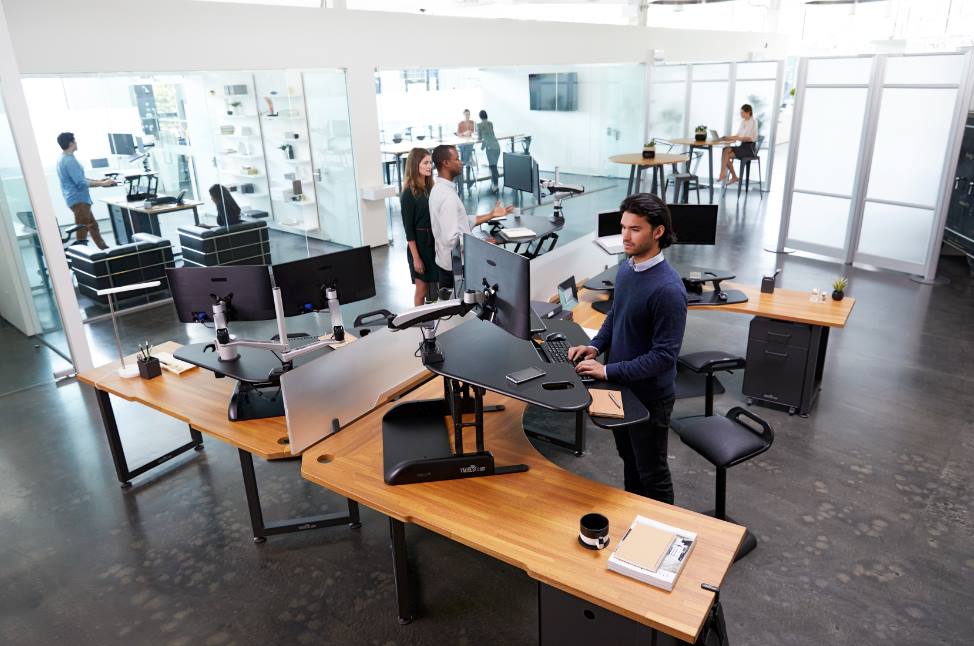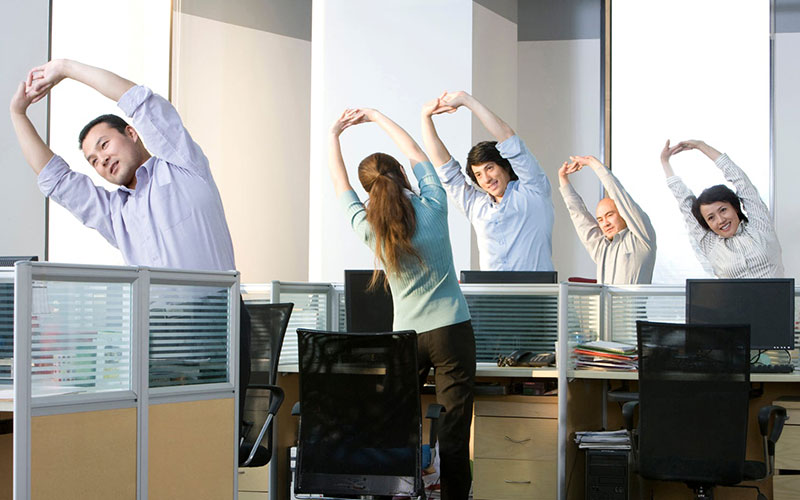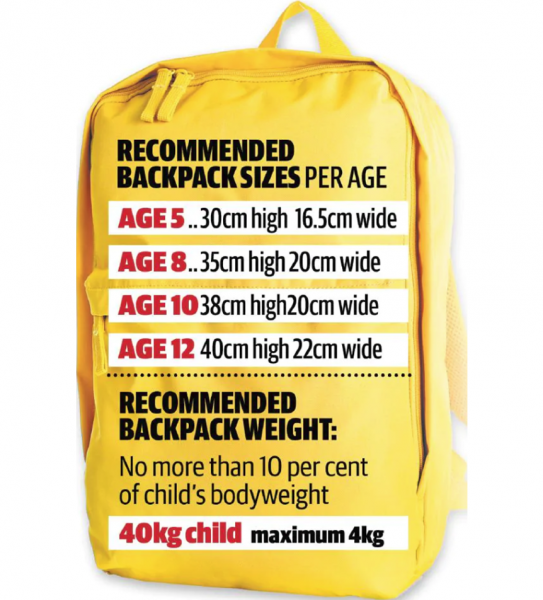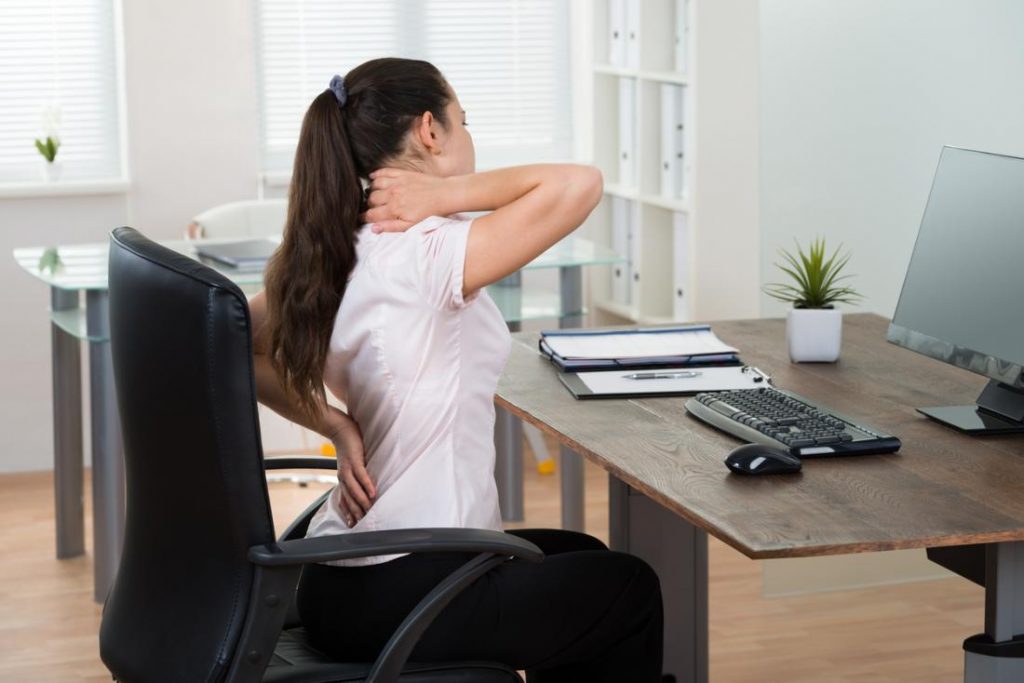In case you haven’t heard sitting is the new smoking. Research has shown that sitting for extended periods of time, like sitting at a desk or in a car, can have serious health implications. Aside from developing musculoskeletal issues like neck, shoulder and back pain sedentary lifestyles increase our risk of developing obesity, heart disease, diabetes and even some types of cancer.
So here are our top 10 tips to getting you moving more in the workplace:
- Stand up and change position every half hour
- Take the stairs where possible instead of an elevator
- Organise a group activity (Different exercise every hour on the hour i.e. 10 squats or star jumps)
- Rather than sending an email walk over to a colleague to talk
- Try standing or walking meetings
- Park you’re car as far as possible or better yet walk to/from work or catch public transport
- Try sitting on an exercise ball
- Drink plenty of water
- Use a stand up workstation
- Use phone calls as a trigger to get up and walk around the office or better yet walk around whilst talking on the phone






